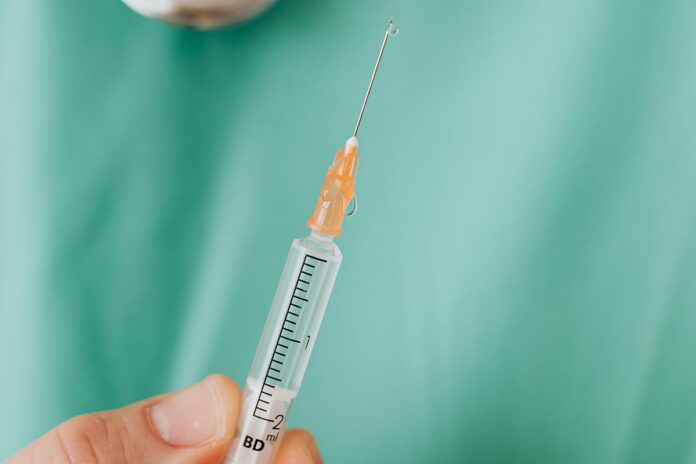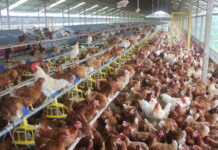
Antimicrobial resistance in human and animal isolates in the E.U. remains a significant problem despite the bans of antibiotic growth promoters and the reductions in animal usage achieved over the past 20 years. In the U.S. over the past decades antimicrobial use in food-producing animals has been increasingly restricted by the Food and Drug Administration.
Introduction
Even though most experts agree that the phenomenon of antimicrobial resistance is ancient and preceded the discovery and commercial use of antibiotics in both human and veterinary medicine and the main driver of antimicrobial resistance in humans is antimicrobial use in humans rather than animals and that lowering antimicrobial consumption by itself is not likely to result in measurable improvements in human health, the pressure to further restrict antimicrobial use in food-producing animals has continued. This pressure will continue although antimicrobial resistance in human and animal isolates in the E.U. remains a significant problem despite the bans of antibiotic growth promoters and the reductions in animal usage achieved over the past 20 years as evidenced by the latest report by European Food Safety Authority. Over the past decades antimicrobial use in food-producing animals in the U.S. has been increasingly restricted by the Food and Drug Administration Center for Veterinary Medicine (FDA-CVM).
For example, years ago the FDA required changes to the labels for antimicrobials used in food-producing animals that showed prevention and control of specific diseases or pathogens, other labels indications not pertaining to prevention or control of specific diseases or pathogens were eliminated although growth promotion claims remained in effect.
Since 1988 all antimicrobials approved for use in food-producing animals are only administered by prescription by a licensed veterinarian and since 2003 all new antimicrobials submitted for approval in food-producing animals must include a risk analysis detailing the likelihood of creating antimicrobial resistance and its potential for transfer to humans. In 2004 Congress passed the Animal Drug Use Clarification Act (AMDUCA) that permitted licensed veterinary practitioners to use drugs in an extralabel manner if they held a valid veterinarian client patient relationship (VCPR), however AMDUCA specifically excludes several antimicrobials like chloramphenicol, furazolidone, nitrofurazone, fluoroquinolones and glycopeptides.
In 2005 the fluoroquinolone, enrofloxacin, the most effective medication that the poultry industry has ever had to treat systemic infections caused by E. coli and other organisms was banned from use in poultry by the FDA-CVM over concerns about cross-resistance to the human analogue, ciprofloxacin, in Campylobacter jejuni, prior to that the manufacturer of sarafloxacin (another fluoroquinolone approved for use in poultry) had voluntarily agreed to discontinue sales in poultry.
In 2012 the FDA-CVM prohibited the extralabel drug use of cephalosporins in food-producing animals, including poultry. The same year, FDA-CVM issued Guidance For Industry # 209 and 213 that detailed the road map for drug sponsors to eliminate growth promotion claims from all medically important antimicrobials and to secure new disease prevention and control claims for medically important antimicrobials lacking those, the guides also included new rules for veterinary oversight when medically important antimicrobials are used in food-producing animals.
Along those lines, the FDA-CVM made a proposal to revise the Veterinary Feed Directive (VFD) to make it more efficient and streamline when the new changes went into effect. The changes consisting of veterinary oversight (prescriptions for water-administered antimicrobials or VFD order for feed-administered antimicrobials) and elimination of growth promotion uses for medically important antimicrobials went into effect on January 1, 2017.
Antimicrobial uses in food-producing animals
Therapeutic uses include: disease prevention, treatment and control.
Treatment is when an antimicrobial is administered to a group of animals or a flock exhibiting clinical signs of the disease.
Control (metaphylaxis) is when an antimicrobial is administered to a group of animals or a flock as soon as the morbidity and mortality have exceeded the standard.
Prevention (prophylaxis) is when an antimicrobial is administered to a group of animals or a flock that are healthy but considered to be at risk of exposure to the disease.
Growth promotion is when an antimicrobial is administered at subtherapeutic concentrations to a group of healthy animals or a healthy flock via the feed for a relatively prolonged period with the main purpose of improving gut health and consequently with the resulting improvements in production parameters such as the rate of weight gain and feed conversion. Growth promotion use of medically important antimicrobials in food-producing animals in the U.S. ended as of January 1, 2017 but it is still allowed in other countries.
Antimicrobial use in poultry
As stated in the AAAP-AVMA guidelines for judicious use of therapeutic use of antimicrobials in poultry, the main obligations of the poultry veterinarian are to address the health and wellness of poultry while at the same time protecting food safety and public health.
When a poultry practitioner has made the decision to use an antimicrobial to treat or prevent a bacterial infection of poultry his/her objective is to maximize the potential for a positive therapeutic outcome with a minimal risk of developing antimicrobial resistance. Once the decision to use an antimicrobial in a flock of birds has been reached, the poultry practitioner should carefully consider the following factors that play an important role in obtaining the desired clinical response:
- Diagnosis
- Antimicrobial
- Dose
Diagnosis
It is extremely important to make an accurate diagnosis of the infection that is being treated to determine the best of course of action. In poultry the following are the diseases that most frequently require treatment with an antimicrobial:
Chickens
- CRD/Colisepticemia/Airsacculitis/Pericarditis/Perihepatitis/Polyserositis
- Necrotic enteritis
- Gangrenous dermatitis
- Infectious sinusitis (M. gallisepticum infection)
- Infectious synovitis (M. synoviae infection)
- Staphylococcal arthritis
- Fowl cholera
- Infectious coryza
- ORT (Ornithobacterium rhinotracheale)
- Omphalitis
- Salmonellosis
Turkeys
- CRD/Colisepticemia/Airsacculitis/Pericarditis/Perihepatitis/Polyserositis
- Clostridial dermatitis
- Infectious sinusitis (M. gallisepticum infection)
- Infectious synovitis (M. synoviae infection)
- ORT (Ornithobacterium rhinotracheale)
- Fowl cholera
- Erysipelas
- Bacterial synovitis/osteomyelitis
- Necrotic/ulcerative enteritis
- Bacterial enteritis/dysbacteriosis
- Omphalitis
- Salmonellosis
- Chlamydiosis
A licensed poultry veterinarian with a valid VCPR is the best person to make a preliminary diagnosis based on farm/flock history, clinical signs, postmortem lesions and diagnostic laboratory culture and susceptibility results. Because clinical signs and lesions in some instances can be similar or mixed infections can occur, it is always desirable to collect a set of swabs for bacterial isolation and antimicrobial sensitivity testing prior to initiation of therapy, likewise, whenever possible a representative sample of sick birds should be submitted to a veterinary diagnostic laboratory for examination by a poultry pathologist before therapy is initiated.
Antimicrobial
Once a preliminary diagnosis has been established the veterinarian must then elect the best antimicrobial for that situation that is most likely to result in the desired therapeutic outcome. The following are important factors to consider when electing an antimicrobial for use in poultry:
- spectrum of activity (narrow spectrum preferred);
- importance in human medicine (lesser importance preferred);
- is the antimicrobial concentration dependent or time dependent?
- is it bacteriostatic or bactericidal?
- are there label indications for the intended use?
- ability to reach the target tissue and maintain concentrations above the MIC;
- susceptibility of the pathogen in question;
- stability, solubility and compatibility with the pH of the water (if administered in the drinking water);
- type of infection (acute or chronic; systemic or localized);
- immune status of the bird/flock;
- route of administration;
- potential for toxicity;
- farm history;
- water and feed consumption of affected flock;
- withdrawal requirements;
- availability and cost.
Dose
Along with the correct dose, the proper therapeutic regimen is important to achieve the desired clinical response. Important factors to consider regarding the dose and therapeutic regimen include the following:
- route of administration (oral vs. parenteral; water vs. feed);
- dose (fixed percentage in drinking water, g/ton (ppm) in feed, milligrams or units/gallon of drinking water or milligrams/lb. of body weight). Ideally, all antimicrobials should be dosed based on milligrams/lb. of body weight;
- frequency of administration, every 12 or 24 hours; standard vs. pulsed;
- duration of treatment (based on knowledge of pharmacodynamics and pharmacokinetics in poultry and other considerations such as a post-antibiotic effect);
- potentiating measures like increasing the pH of the water when sulfonamides and penicillin are used or lowering the pH of the water when tetracyclines or erythromycin are used. Lowering the calcium content of the diet during therapy with tetracyclines has been used to boost therapeutic concentrations in serum.
Judicious use
Despite all efforts to optimize poultry husbandry, management practices, biosecurity, vaccination programs and the poultry house environment, from time to time poultry flocks will be sickened by bacterial infections that will ultimately require the use of an antimicrobial to mitigate suffering, restore welfare, prevent spread of the disease and ultimately provide a safer product for the consumer. The use of an antimicrobial in those circumstances is not only judicious but indicated as judicious use is not synonymous with no use.
Because many product label indications do not include diseases or dosages that are known to respond favorably to an antimicrobial, a poultry veterinarian with a valid VCPR can prescribe antimicrobials in an extralabel manner as permitted by the AMDUCA legislation of 2004. However, ELDU is not allowed in drugs administered via the feed so for all drugs administered via the feed the veterinarian must follow label indications and dosages and in the case of medically important antimicrobials comply with the new rules that went into effect in 2017 such as the requirement for a VFD order. For antimicrobials administered by other means such as the drinking water or injection the veterinarian can use antimicrobials in an extralabel manner based on his clinical experience if assurance is made that drug residues will be depleted by the time the flock goes to market. There are also specific antimicrobials that are excluded from ELDU such as like chloramphenicol, furazolidone, nitrofurazone, fluoroquinolones and glycopeptides. Additionally, in 2012 the FDA-CVM specifically prohibited ELDU of cephalosporins in food-producing animals, including poultry.
Use of antimicrobials in an extralabel manner should be backed by the clinician’s experience, knowledge of pharmacodynamics and pharmacokinetics of the antimicrobial, farm history and results from in vitro antimicrobial susceptibility testing. When an antimicrobial is used in an extralabel manner the veterinarian should consider first those of lesser human importance and at the label dosages that are likely to produce a positive therapeutic outcome. The ELDU of critically important antimicrobials should be considered only as a last resort.
Conclusions
- Despite optimal management, preventive and husbandry practices, from time to time poultry flocks will be stricken by bacterial infections that will require the use of antimicrobials to mitigate suffering and restore health.
- A licensed poultry veterinarian with a valid veterinary client patient relationship is the best person to determine the proper course of action when dealing with a bacterial infection.
- Industry surveys from practicing poultry veterinarians consistently show that lack of new effective medications to prevent, control and treat diseases is a major obstacle in fulfilling their professional oath in regard to protect animal health and welfare and the prevention and relief of animal suffering. Antimicrobials are important tools and their use in poultry medicine should be preserved at all cost.
- There are numerous safeguards in place to ensure that antimicrobials are used properly by the poultry industry and this is confirmed by an outstanding record of no violations of residue tolerances in all segments of the poultry industry.
- Poultry veterinarians employed by the poultry industry have done a good a very good job of using antimicrobials judiciously.
References are available on request
From the proceedings of the Midwest Poultry Federation Convention 2018

















